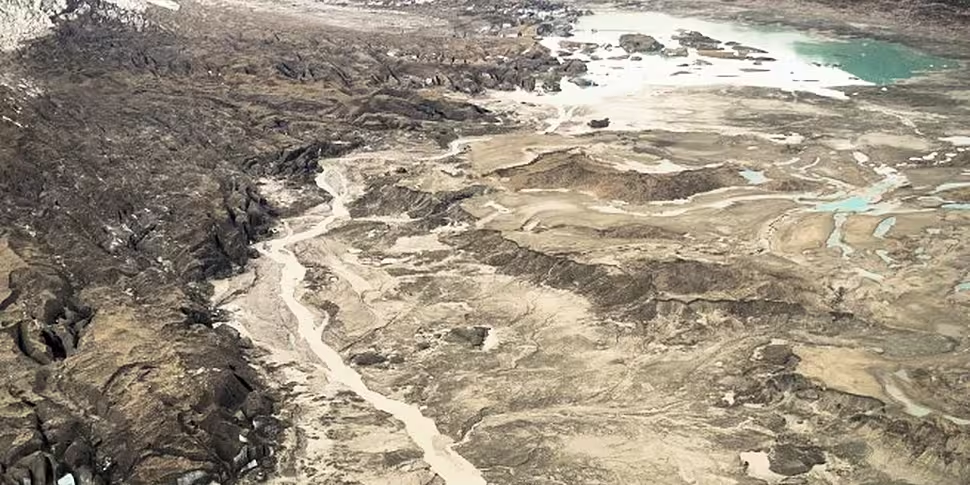Scientists in Canada have documented how an immense river that flowed across the country’s Yukon Territory for centuries, vanished in a matter of days last spring.
The abrupt disappearance of the Slims River is the first observed case of ‘river piracy’ – where the source of one river is suddenly diverted into another.
The incident reported in the journal ‘Nature Geoscience’ has been held up as an extremely worrying illustration of the effects of global warming – and an example of how incremental temperature increases can lead to sudden and drastic environmental impacts.
The disappearance of the river – which spanned up to 150 metres at its widest point – has dramatically altered the landscape and ecology of the remote territory.
River piracy
The study documents how the retreat of the Kaskawulsh Glacier – one of the largest in Canada – led to a drastic change in the destination of its meltwater in spring 2016.
A period of intense melting led to a new channel being carved through a large ice field – tipping the drainage gradient in favour of a second river and redirecting the glacier meltwater to the Gulf of Alaska and into the Pacific Ocean.
The change means the water has been redirected thousands of miles off its original course – which would originally have brought it northwards into the Bering Sea.
The scientists concluded that the river theft “is likely to be permanent.”
Shocking discovery
One of the researchers involved in the study, James Best, a geologist at the University of Illinois told The Guardian that the discovery took the team completely by surprise.
“We went to the area intending to continue our measurements in the Slims River, but found the riverbed more or less dry,” he said.
“The delta top that we’d been sailing over in a small boat was now a dust storm. In terms of landscape change it was incredibly dramatic.”

Exposed”…sediments”…and”…dust”…storms”…at”…the Yukon's Kluane”…Lake -”…with”…Dan”…Shugar”…in the”…foreground.”…Lake”…level”…fall,”…due”…to”…piracy”…of”…the”…Slims”…River,”…has”…left”…the”…delta”…top”…exposed”…and”…prone”…to”…wind storms. Image: Jim Best/University of Illinois
The team flew a helicopter over the glacier and into the next valley – which is less accessible – to try and determine what had led to the river’s disappearance.
“We found that all of the water that was coming out from the front of the glacier, rather than it being split between two rivers, it was going into just one,” said Best.
A geological instant
River piracy events can take thousands of years to occur and the speed of the change in course has shocked researchers - with flow data revealing it occurred over a few short days between the 26th and 29th May 2016.
A statistical analysis undertaken as part of the study puts the likelihood of the phenomenon having occurred due to natural causes at 0.5% - making it almost certain that the event occurred due to climate change as a result of human activity.
“It is 99.5% that it occurred due to warming over the industrial era,” said Mr Best.
While the Slims has been reduced to a trickle, the opposite has happened to the Alsek River – which flows south from the other side of the glacier.
While the two rivers were previously similar in size, the Alsek – a UNESCO world heritage site – is now 60 to 70 times larger than the Slims.
Ecological effect
The change has had a dramatic impact on the surrounding countryside with winds whipping up the exposed riverbed sediment into frequent and extensive afternoon dust storms and waterfront land now further from the shore.
Fish populations have been completely redistributed, lake chemistry has been altered and animals are venturing down to the exposed riverbed to eat the fresh vegetation.
While the Yukon region is extremely remote and sparsely inhabited, any potential river piracy events at other glaciers could have a huge effect on populations and settlements that are dependent on glacial river water.
In an article accompanying the study, Rachel M. Headley, glacier expert and assistant professor of geoscience at the University of Wisconsin-Parkside warned that “this unique impact of climate change” could have far-reaching consequences.
“While one remote glacial river changing its course in the Yukon might not seem like a particularly big deal, glacier melt is a source of water for many people, and the sediments and nutrients that glacier rivers carry can influence onshore and offshore ecological environments, as well as agriculture,” she said.
“If a river changes course so drastically that the drainage basin no longer reaches its original outlet, this change might eventually impact human and biological communities that have grown around the river’s original outlet.”
She warned that as the world continues to warm, populations dependent upon glacial meltwater should pay special attention to these processes.









